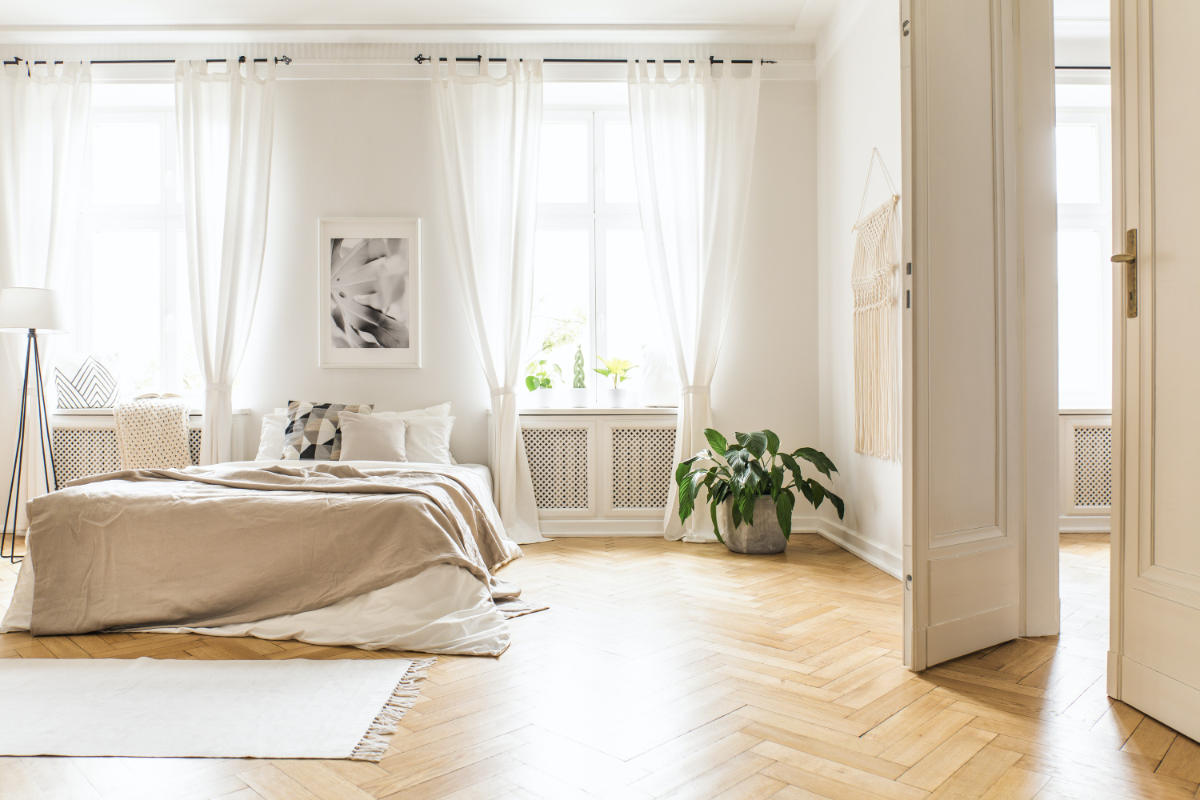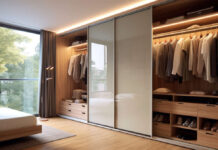Ask any architect or interior designer and they are likely to say that light is one of – if not the – most important consideration in the layout of a home.
Quite apart from being essential (cooking in the dark is not advised), light provides the framework for a home’s aesthetic, and the foundation for its – to use a technical term – ambience.
It doesn’t matter how well you’ve feng shui-ed your cellar – if it’s lit by a single, flickering bulb, it’s still going to feel like the set of a horror movie.
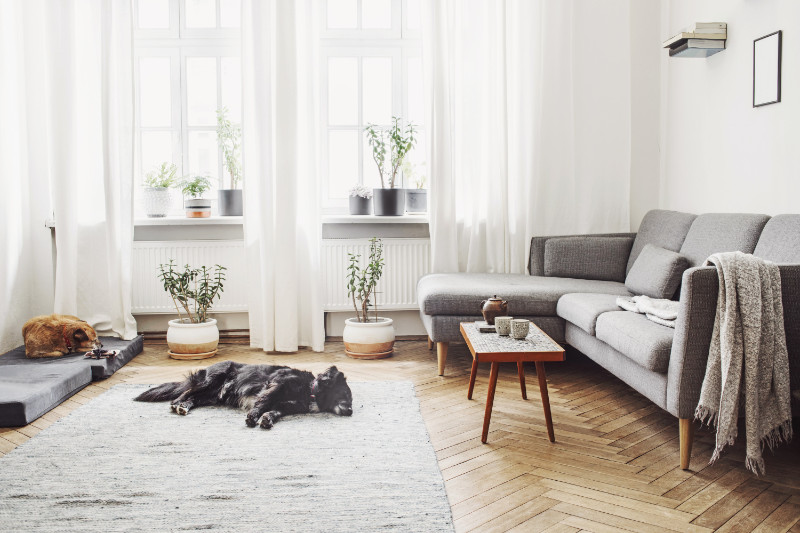
Consider the persistent (if factually shaky) notion that sun-soaked, south-facing dwellings command a hefty premium on the property market, or the enduring trend for modern, glass-plated office blocks that quite literally have windows instead of walls.
Clever design hacks to bring more natural light into your home
Here’s how to make your home the brightest and best it can be, from streaming sunbeams to energy-saving LEDs…
Make a proper plan
Most people know that when it comes to light sources, more is usually merrier. But the result is that homeowners load up expensive fixings without taking care of even the simplest practical alterations.
For immediate improvement, a short recce goes a long way: Look at the location of your windows, what they’re illuminating, and what you want them to illuminate. Make a note of where the sun comes from in each part of the day, and if any rooms seem particularly drab and gloomy.
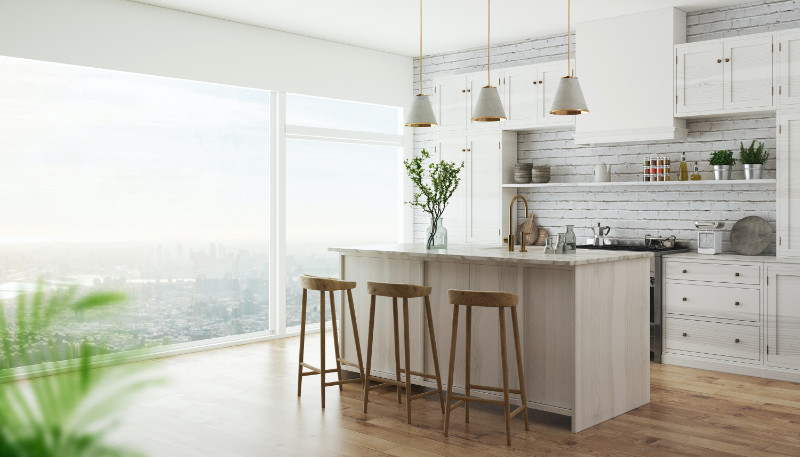
With your stock-take complete, move furniture that might be blocking a window’s view, and clear out cluttered windowsills. If you have several electric lights covering a space usually bathed in sunshine, rejig your room rather than spending a fortune adding to it.
Consider moving obstacles outside your home too. If your climbing hydrangea has launched a hostile takeover against your windowpanes, it’s time to call in the garden shears.
Use light colours
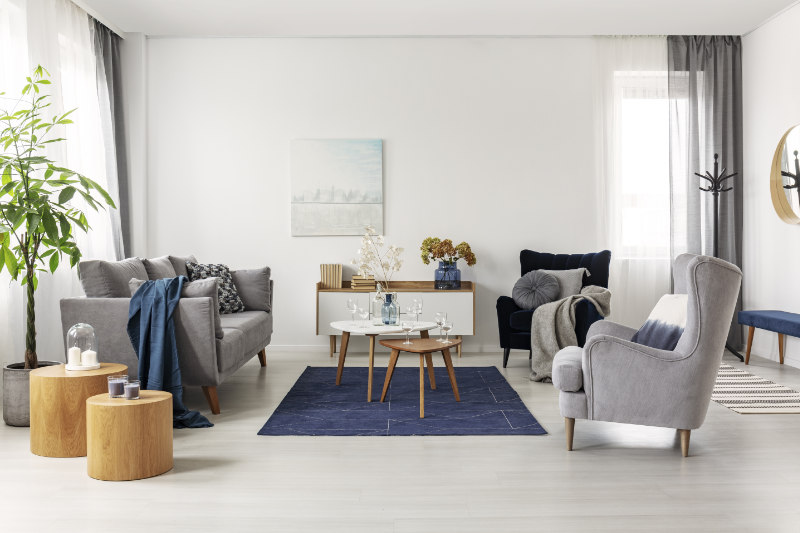
Assuming that you do, in fact, have windows, your next key point should be colour. Banishing statement wallpaper and dark block colours and paint your wall lighter shades as it reflects the natural light entering the room, rather than absorbing it. Paint with a satin finish reflects more light than matt paint.
Avoid pure white surfaces, however, as these can feel a little cold. An off-white or light cream is a shoo-in for walls and ceilings when cultivating a brighter feel. Painting the ceiling a couple of shades lighter than the walls is a clever design trick that creates the illusion of height.
Light-hued furniture and accessories
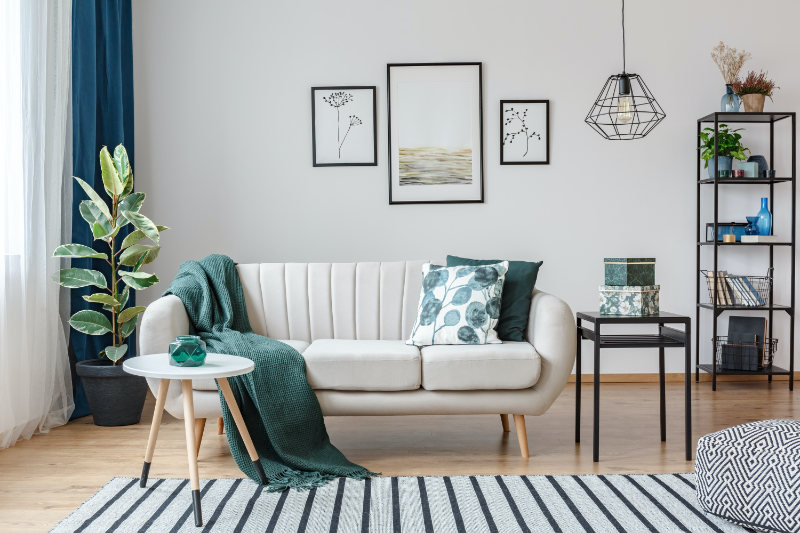
Soft hues absorb far less light than dark ones, and for the most radiant rooms, you should look beyond the masonry. Consider pastel-coloured cupboards, pale wood furniture, or light-hued decorations. There’s nothing wrong with a black leather sofa, or some statement, patterned wallpaper, but they won’t necessarily help your rooms retain light.
Aesthetically, many designers opt to add in darker trimmings. Cushions, knick-knacks and other smaller furnishings look great in dark grey or navy and provide contrast without significantly sacrificing light.
Metallic, glass and mirrored accessories also help to bounce available light around your room.
Use lots of mirrors
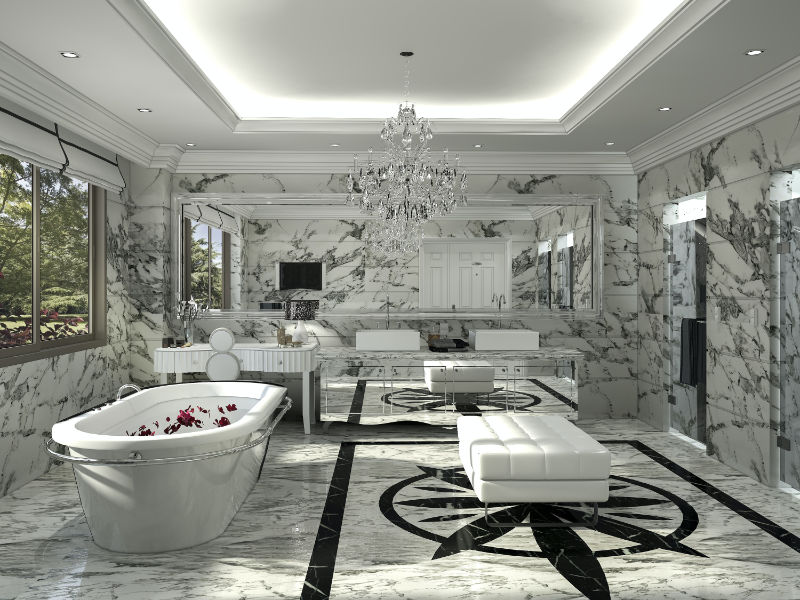
If you’re looking to increase your intake of natural light, mirrors are perhaps the most literal way of doing so. They reflect light that would otherwise be absorbed into the wall, and hanging one opposite a window sends daylight bouncing around the room.
Wall-mounted mirrors are a go-to for grooming as much as for decor, and fashion-conscious bedrooms often boast something free-standing and full-length. Next level homeowners could employ mirrored furniture – mirrored tables, mirrored wardrobes, even a mirrored chest of drawers.
Large mirrors give the illusion of a much larger, lighter space, and if the room feels bright and breezy, so too will its reflection.
Clever window dressing
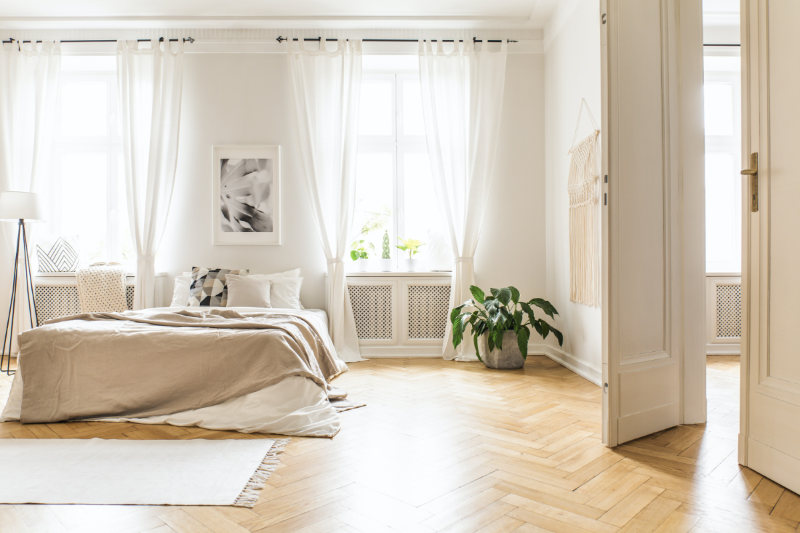
Your windows are the main allies in your fight for light, so you’d be wise to give them plenty of tender loving care.
Blinds are a good bet for a light-heavy home, leaving the window entirely exposed when open and creating lovely lines of light when down. However, they don’t provide a blackout effect, so if you’re a light sleeper stick to curtains in your bedroom.
Light linen or cotton curtains are similarly appropriate – and can be hung in layers to more closely control the flow of light. Heavier, thicker fabrics like velvets and brocades are generally more accustomed to blocking light, while wide-slat shutters are flexible and channel a Mediterranean feel.
Add artificial light
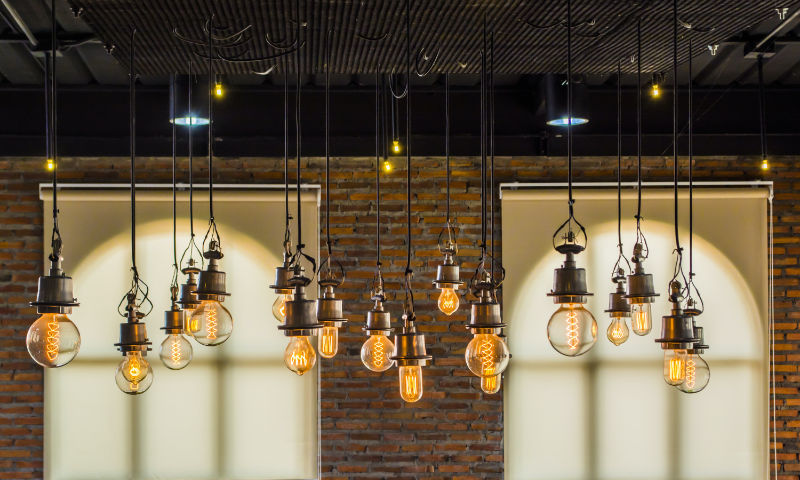
Natural light tends to gobble up the headlines, but artificial light is where the buck stops.
Let’s divide it into three stylistic varieties. Ambient lighting diffuses evenly through a room, and is usually the starting point for a larger scheme. Think ceiling lights, perhaps integrated with lamps on floors or tables.
Naturally, ambient lighting isn’t strong on contrast, so try some accent lighting to help instil separation. Accent lighting is brighter and much more directional, ensuring centrepieces like dining room tables get the focus they deserve.
Make sure these lights are not so concentrated that they behave like spotlights. You don’t want to channel the sort of aggressive glare normally reserved for police interrogation rooms.
Finally, consider task lighting – very strong light sources marshalled for specific purposes. Think downward-facing desk lamps that can illuminate a keyboard clear as day, or a row of bulbs as floodlights for a worktop. There’s no point illuminating the corridor with pixel-perfect high-def if your closet is so dimly-lit all your darker clothes merge into one.

Keep these principles in mind when allotting wattage in your home, and where possible try before you buy. Road-test bulb brightness, or better yet employ a dimmer switch.
Wash your walls
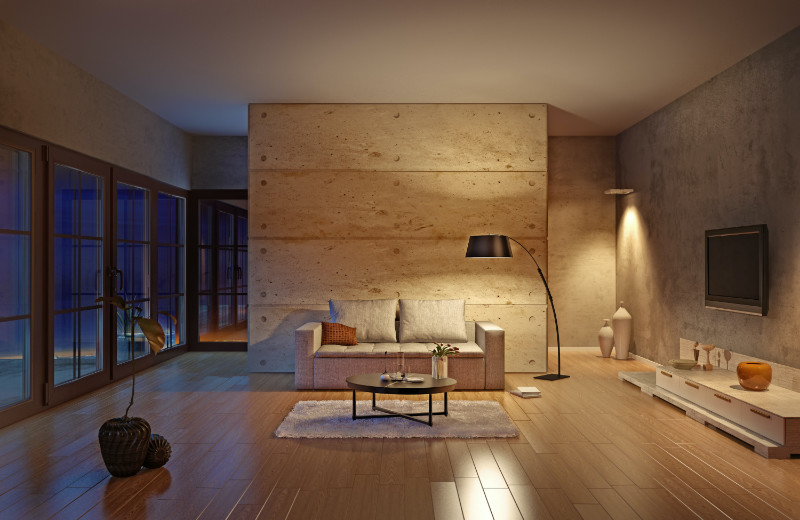
No, not with soapy water – in this context washing your wall means to splash light across a surface, creating the illusion that the whole room is aglow.
Consider vertical light fixings, that send a warm light upwards and downwards, creating a sheet-like glow across a wall. It’s better to bathe an area with one effective light source than pepper it with unattractive fixings.
Make structural changes
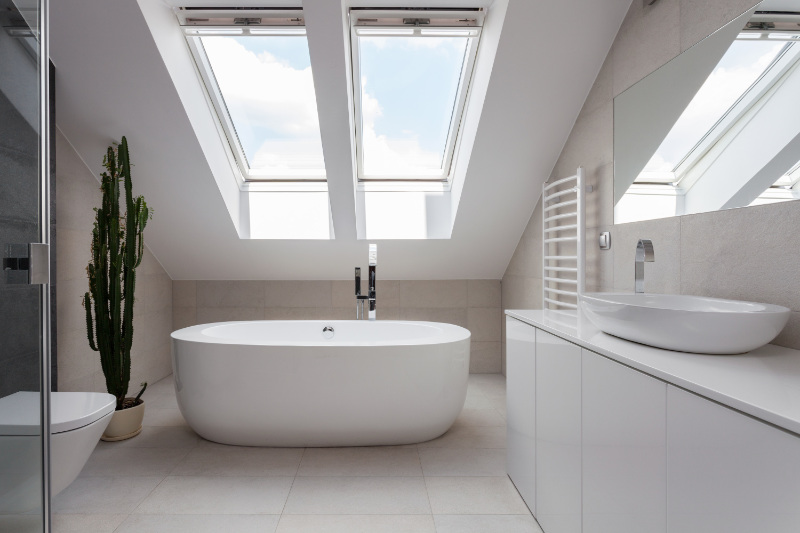
For those with the time, inclination and, most of all, the money, there are plenty of home improvements that can turn dingy dungeon to gleaming greenhouse. Some are obvious – more and bigger windows, glass patio doors and so on – but others are slightly less intuitive.
Skylights are an oft-neglected sub-genre of windows – the light comes straight from the source and can often spread across an entire floor space.
Thick-set, dark-coloured doors can keep natural light from reaching the heart of your home, so consider glass panelling even on doors that don’t open into the air. Next-level homeowners can go one better by embracing a more open-plan layout throughout their dwelling.
Though not traditionally a light-emitting surface, even the floor can play its part. Opting for polished, well-finished hardwood, ceramic or stone can keep light ricocheting off your interiors like an underfoot mirror.
Shopping for new windows? The pros and cons of double glazing























































